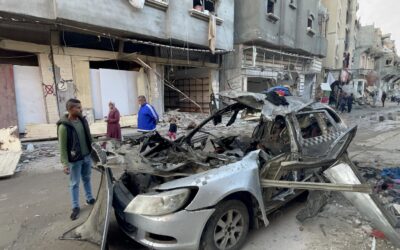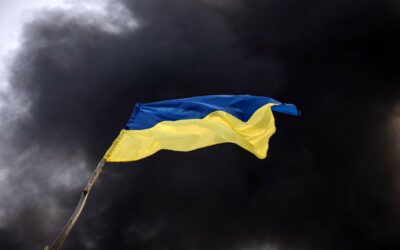
Estonia’s Top Diplomat: Stop Putin Now or Prepare for NATO-Russia War
SUBSCRIBER+EXCLUSIVE INTERVIEW — With a mere 1.2 million citizens, Estonia is among NATO’s smallest members, but its contributions to Ukraine have led the pack by […] More
Kim Jong-un’s New Year’s speech has triggered fevered speculation about the possibility of an impending North Korean intercontinental ballistic missile (ICBM) test, even provoking President-elect Donald Trump to tweet, “it won’t happen.” Yet for anyone paying attention to North Korea’s development of weapons of mass destruction (WMD), the prospect of an ICBM test is no surprise, since a road-mobile long-range missile has been under development for some time.
While there has been speculation that the first test could happen around President-elect Trump’s inauguration, the track record of expert prognostications about the exact timing of North Korean provocations is exceedingly poor. Having said that, the likelihood of North Korean nuclear and missile tests over the next six months is fairly high if the Trump administration continues the Obama administration’s unsuccessful approach of “strategic patience,” which focused on getting China to put so much pressure on Pyongyang that it stops these practices. Within this six-month window, new nuclear or missile tests are most likely in the aftermath of the Joint US-ROK exercises currently scheduled for February and March, which in the past have invariably ignited harsh rhetoric from the North and occasionally concrete action.
A nuclear or missile test would pose a vexing problem for the new president, and he would have few good options for an effective response. Rather than wait until a test occurs before taking action as the Obama administration did many times over the past eight years, trying to avert this challenge should be a top priority of the new administration. A near-term crisis prevention strategy— all part of a more comprehensive long-term strategy to establish a nuclear-free Korean peninsula and a permanent peace regime—would consist of the following elements:
No one should be under any illusion that even if formal talks begin, that it will be easy. It will be long and difficult, probably focusing on a phased-process of reciprocal steps. It is entirely possible, of course, that Pyongyang will show that it is more interested in expanding its missile and nuclear arsenal than in finding a negotiating path forward. How should the Trump administration respond? A military strike to remove the North Korean ICBM threat before it menaces the United States, as some experts have advocated, would be reckless and irresponsible: it has low odds of success, would also be opposed by Korea and Japan, and draw China into what would likely be a devastating second Korean War.
Rather, the administration should establish a much more robust regime of containing Pyongyang than exists today. It would have no choice in these circumstances other than to:
All these measures are fraught with serious risks, costs, and consequences. The president-elect has shown that he can be pugnacious and pick fights. Can he be the type of leader who, as his mantra goes, negotiates peace through strength? Time is running out.
Related Articles

SUBSCRIBER+EXCLUSIVE INTERVIEW — With a mere 1.2 million citizens, Estonia is among NATO’s smallest members, but its contributions to Ukraine have led the pack by […] More

SUBSCRIBER+EXCLUSIVE BRIEFING — Drone weapons are part of the daily narrative of the war in Ukraine – from Russia’s use of Iranian drones against infrastructure […] More

SUBSCRIBER+ EXCLUSIVE ANALYSIS — Iran’s retaliatory strikes against Israel this weekend were both a potentially game-changing, historic first — and an underwhelming response. Historic, because […] More

SUBSCRIBER+EXCLUSIVE INTERVIEW — Ukraine was hit by a fresh round of Russian missile attacks on Thursday, strikes that targeted and damaged the country’s power grid […] More

SUBSCRIBER+ EXCLUSIVE REPORTING — The Israeli drone strike that killed three adult sons (who Israel says were Hamas operatives) and four grandchildren of Hamas’s Qatar-based […] More

BOTTOM LINE UP FRONT – In the spring of 2022, Ukraine beat back a Russian assault on the nation’s capital and punished the invaders on […] More
Search